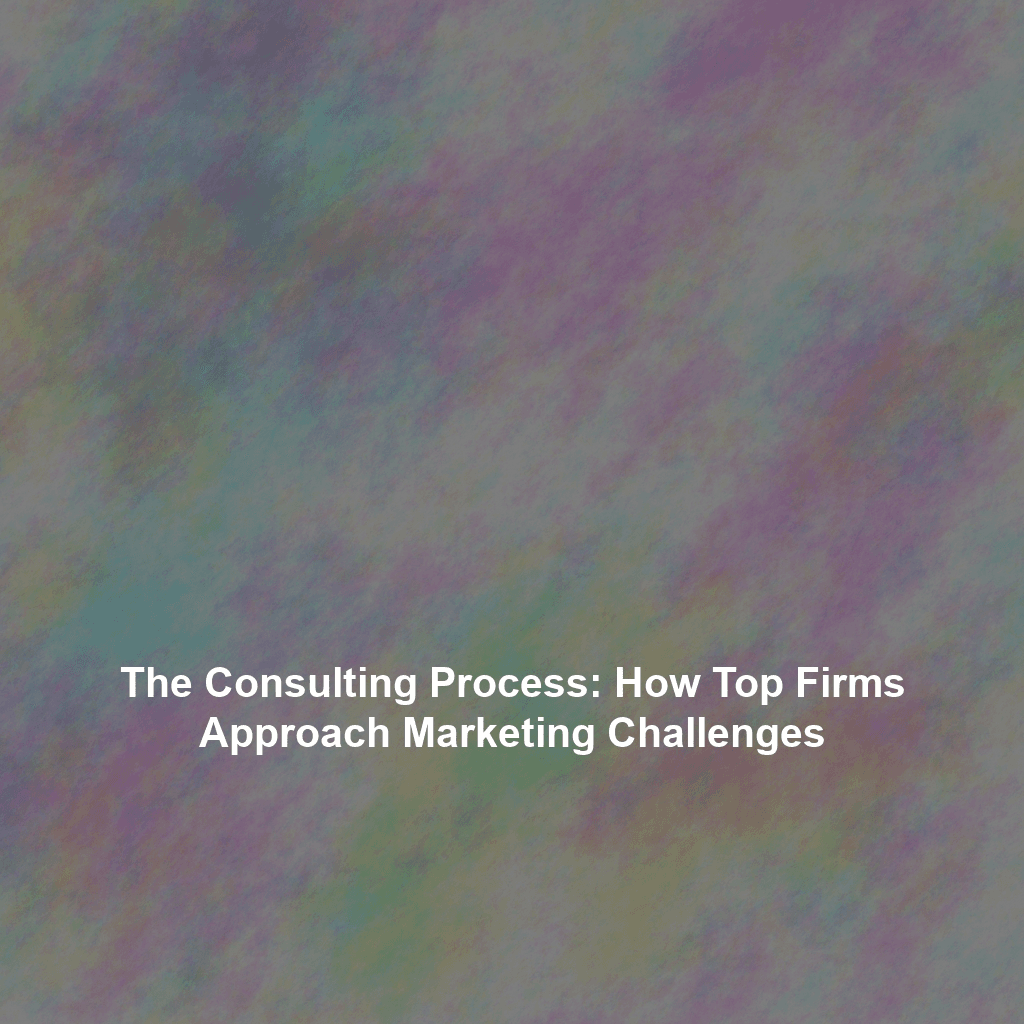The Consulting Process: A Step-by-Step Guide
While each firm might have its unique nuances, the fundamental consulting process generally follows a structured approach, emphasizing data-driven decision-making and client collaboration.
1. Problem Definition: Unveiling the Core Challenge
The initial phase, and arguably the most critical, is defining the problem accurately. This goes beyond simply stating the symptoms. For instance, a client might say “Our sales are down.” But that’s not a defined problem. McKinsey, BCG, and similar firms would delve deeper, asking questions like:
- What specific product lines are affected?
- In which geographic regions are sales declining?
- What is the competitive landscape like in those regions?
- Has there been a change in marketing spend or strategy?
Through rigorous questioning and initial data gathering, consultants work with the client to define a clearly articulated problem statement. This might evolve into something like: “Declining sales of Product X in the Northeast region due to increased competition from Company Y and a lack of targeted marketing efforts toward Millennial consumers.” A well-defined problem statement serves as the North Star, guiding the entire engagement.
2. Data Collection: Gathering the Evidence
Once the problem is defined, the next step is to gather relevant data. This involves a multi-faceted approach, drawing on both internal and external sources.
Internal Data Sources
Consultants will analyze the client’s own data, including:
- Sales figures
- Marketing campaign performance
- Customer demographics
- Website analytics
- Customer surveys and feedback
External Data Sources
To gain a broader perspective, consultants also leverage external data, such as:
- Market research reports (e.g., from Gartner, Forrester)
- Industry publications
- Competitor analysis (including their marketing strategies and customer reviews)
- Economic data
- Social media trends
This data collection process often involves interviews with key stakeholders within the client organization, including marketing managers, sales representatives, and even customer service representatives. The goal is to create a comprehensive and objective picture of the current situation.
3. Data Analysis: Uncovering the Insights
With the data gathered, the next stage is rigorous analysis. This is where the analytical prowess of firms like BCG and Bain truly shines. They use a variety of techniques, including:
- Statistical modeling: To identify correlations, predict trends, and forecast potential outcomes.
- Segmentation analysis: To divide customers into distinct groups based on their needs, behaviors, and preferences.
- Competitive analysis: To understand the strengths and weaknesses of competitors and identify opportunities for differentiation.
- SWOT analysis: To assess the client’s internal strengths and weaknesses, as well as external opportunities and threats.
The focus is on identifying key insights that explain the problem and point towards potential solutions. For example, data analysis might reveal that a specific customer segment is highly responsive to social media advertising but is being underserved by the client’s current marketing efforts. Or it might show that a competitor’s product is perceived as superior due to a specific feature that the client’s product lacks.
4. Solution Development: Crafting the Recommendations
Based on the data analysis, consultants develop a set of recommendations designed to address the defined problem and achieve the client’s objectives. These recommendations are typically tailored to the client’s specific circumstances and resources. They might include:
- New marketing strategies: Such as targeting new customer segments, launching new products, or repositioning existing brands.
- Improved marketing processes: Such as streamlining marketing workflows, implementing new marketing technologies, or enhancing customer data management.
- Organizational changes: Such as restructuring the marketing department, hiring new talent, or improving communication between marketing and sales.
The recommendations are not just theoretical ideas. They are supported by data and analysis, and they are presented in a clear and actionable manner. Consulting firms often use frameworks like the McKinsey 7-S framework or BCG Matrix to provide a structured approach to solution development.
5. Implementation and Monitoring: Ensuring Success
The final step is to help the client implement the recommendations and monitor their effectiveness. This might involve providing ongoing support, training client staff, and tracking key performance indicators (KPIs). Consulting firms often work closely with the client to ensure that the recommendations are successfully implemented and that the desired results are achieved. They may also adjust the recommendations based on ongoing feedback and performance data.
The Value of the Consulting Approach
The consulting process, as practiced by firms like Oliver Wyman and Bain, provides significant value to clients facing complex marketing challenges. By bringing a structured approach, deep analytical skills, and objective perspective, these firms can help clients:
- Gain a clear understanding of the problem
- Develop data-driven solutions
- Improve marketing performance
- Achieve their business objectives
While engaging a top-tier consulting firm is a significant investment, the potential return on investment can be substantial. By leveraging the expertise and experience of these firms, companies can unlock new opportunities, overcome challenges, and achieve sustainable growth.
Conclusion
The consulting process employed by top management consulting firms like McKinsey, BCG, Bain, and Oliver Wyman is a powerful tool for solving complex marketing challenges. By following a structured approach, emphasizing data-driven decision-making, and collaborating closely with clients, these firms can help companies unlock their marketing potential and achieve lasting success. While the specific methodologies may vary slightly from firm to firm, the core principles of problem definition, data collection, analysis, solution development, and implementation remain constant, ensuring a rigorous and effective approach to solving even the most intricate marketing puzzles. Understanding this process can empower businesses of all sizes to approach their marketing challenges with greater clarity and confidence, even without engaging a top consulting firm.
 Skip to content
Skip to content

